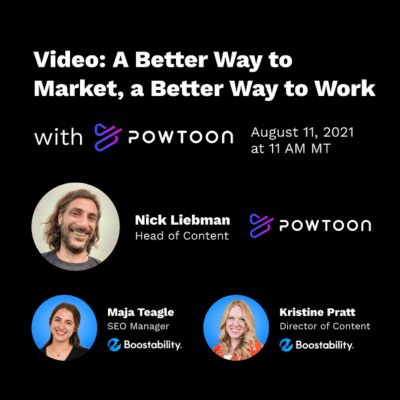The Star Wars franchise is one of the largest and most influential in the world. As of 2018, it had an estimated worth of over $65 billion and that number will only grow in the coming years. Disney has invested a lot into growing the franchise since they bought it in 2012 for $4.05 billion, and the effort has definitely made a difference. Just in the past month, Disney has released a live-action TV show, a video game, and, as of today, a new movie. But the franchise has a rich history of growth dating back long before the acquisition by Disney. Here is a look at some of the important lessons businesses can learn from the triumphs (and occasional hiccups) of the Star Wars franchise.
1. Create new revenue streams
The first trilogy of movies transformed the film industry. As largely independent films, they surprised everyone with their popularity but only because of the risks they were able to take in making the film. Those risks paid off in a big way.
The initial success of Star Wars allowed them to disrupt the industry even more. Before A New Hope, few movies expanded beyond the realm of film and those that did had a very limited impact. George Lucas took advantage of the film’s momentum to create as many new revenue streams as he could. The franchise had a presence in books, comics, animated TV shows, and consumer products, but the biggest impact was on toys.
They saw a niche in small, affordable toys and dominated it. Not only were the Star Wars action figures accessible to the masses, but they emphasized the entire set. Each packaged showed all the other toys and every commercial communicated the importance of having a complete set. Buying one was no longer enough; Star Wars created a culture of collecting and all of a sudden they opened up a new market in adults as well.
Here is the lesson businesses should take away from this example: look for ways to expand your business into new revenue streams and own them!
2. Build the tools you need
Each Star Wars movie has at least one thing in common: innovation. The first trilogy paved the way for modern special effects. No one had ever attempted to capture a space opera on such a large scale before, meaning that the filmmakers had to develop the technology to create the wanted effects. Countless productions used the tools that Star Wars created. However, the prequel trilogy had the largest impact.
Opinions about the prequels are mixed at best and overwhelmingly negative worst with some even saying they came close to destroying the franchise. Wherever you stand on the subject, the impression the movies had on the world is undeniable. That is mostly thanks to a Gungan outcast by the name of Jar Jar Binks.
Jar Jar Binks is perhaps one of the most reviled additions to the Star Wars cannon and even mentioning him in this article is bound to infuriate fans. However, this poor creature deserves some recognition as he revolutionized how we enjoy movies. He was the first fully computer generated character in a live-action film and Lucasfilm invested millions of dollars into developing the technology to make him. Almost every major movie since then has benefited from that innovation.
What should you learn from this? Don’t be limited—build the tools that will make you an industry leader.
3. Create an experience
The new Star Wars-themed addition to Disneyland, Galaxy’s Edge, debuted earlier this year. Disney succeeded in creating a beautiful and remarkably detailed world for consumers to immerse themselves in. However, the true success of Galaxy’s Edge is how it encourages visitors to populate it with their own passion for the brand.
Disney wanted to buck the trend of passive interaction that had defined theme parks for decades. Instead, they built something that allowed every person to have a unique experience and story associated with the franchise. Every actor has a backstory and every corner has an Easter egg. Faithful fans will find endless opportunities to live out their fantasies.
The lesson here is that brands should create experiences for consumers to make their own.
4. Let consumers have ownership
Fans were ecstatic about the first live-action Star Wars series, especially one that would explore a highly-favored but mostly unknown portion of the mythology, the Mandolorians. However, the world quickly realized that the eponymous show isn’t even about the Mandolorians. It is simply a hook that reeled us all into the Baby Yoda craze.
They made an incredibly intelligent decision with this addition to the Star Wars universe. They went back to two of the most endearing aspects of the franchise: crazy cute, unintelligible creatures (i.e. porgs, ewoks, and R2D2) and the OG Yoda himself. But they did so in a new and unexpected way by combining the two elements. It was the perfect balance of refreshing the franchise and playing off of their strengths.
But at the same time, Baby Yoda is not a creation of Disney. He belongs to the fans. The name came directly from the public that created the pedestal he sits upon today.
Learn this from Baby Yoda: create something that your consumers can own and can identify with.
5. Drip feed marketing
As soon as Disney bought Star Wars, they began promoting their new movies. Before casting had even begun, before there was a script, the marketing machine had started up. Now, the release of every movie serves as a model that every business can learn from.
It begins about a year before the movie hits theaters with the release of cryptic posters and a teaser trailer all announcing the name of the movie. Over the course of the next year the marketing department prepares hundreds of hours of promotional content to release regularly around the globe leading up to the release of the movie. The most impressive feat is that they somehow do all of this without giving away the magic of the movie.
The purpose of this strategy is to lead consumers along with the promise of “big reveals”. They have mastered the art of creating hype for the experience of a new movie, not just the film release. In doing so, they create champions of the Star Wars brand that in turn create conversation that grows larger and louder with each new detail that is released. Through this strategy, Disney gets an even bigger bang for their (massive) buck.
The moral of this story: constant content is king. Build up to exciting new developments in your business to get your consumers invested in your brand.
Learn from these mistakes
Mistakes are bound to happen when the whole world is expecting greatness. Here are a few mistakes that Star Wars has made through the years so hopefully you can learn from them.
Understand what motivates your consumers
Perhaps the only thing in Star Wars history more universally hated than Jar Jar Binks is the infamous holiday special. After the overwhelming success of the first movie, there was an obvious demand for more Star Wars in the world. The forces of Hollywood decided to do a holiday special to help fill that demand before a second movie could be produced and released.
While they had good intentions, they didn’t understand what made Star Wars special. They thought the characters were enough to draw the public and rushed a production that’s only purpose was to feature the characters prominently. In the end they disappointed consumers by not staying true to the Star Wars brand.
Listen to consumer feedback
History repeats itself and when Disney bought Star Wars, they made the same mistake trying to rush Star Wars content to the consumer. The problem arose from the schedule that was imposed on movie releases. Disney planned to release a movie a year but later realized that they needed to slow down. The extra time allows them to listen to consumer feedback and fix what doesn’t work. Now they are putting more care into the volume and timing of new Star Wars movies to maintain and grow the magic the series has developed over the past 40+ years.
Understand what your brand stands for
Star Wars is often compared to the Marvel Cinematic Universe because they are both massive entertainment franchises owned by Disney. Star Wars saw significant criticism with The Last Jedi and lost money on Solo. The criticisms of Disney-era Star Wars films can be boiled down to inconsistencies in the franchise that have developed because no one person has creative ownership of the franchise’s future. The previous Star Wars movies where wholly owned by George Lucas and his vision. Similarly, Marvel is led by Kevin Feige.
The Force Awakens was still in production while its sequel The Last Jedi was being made by a different director. Each director exerted their own influence over the trajectory of the franchise and the final products did not match. Both were great Star Wars films, but some fans were disappointed by the different approaches to the two movies.
The Essence of Star Wars
Star Wars has been called the “archetypal myth of our time” and is revered by fans around the world. What makes it so special and how can you replicate its success in your own business? Simply, Star Wars found something untapped that people wanted. There is no other way to explain the fanatical following the franchise has accrued. It walks the thin line between serious drama and kid-centric appeal with success (most of the time).
George Lucas saw what elements had success in the market and intentionally incorporated them into something of his own imagination to make it truly unique. In doing so he tapped into the deep desires and interests of his consumers and continued to make good decisions after that.










